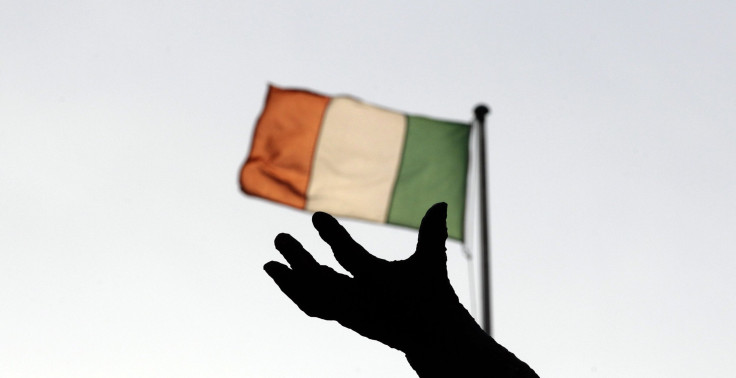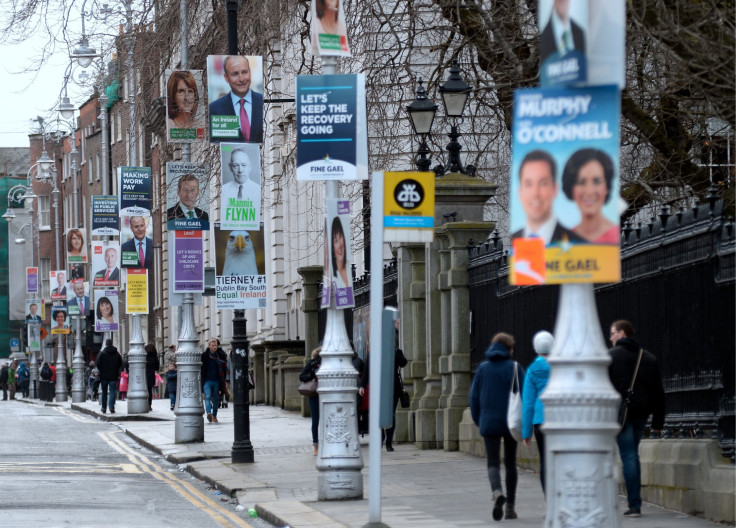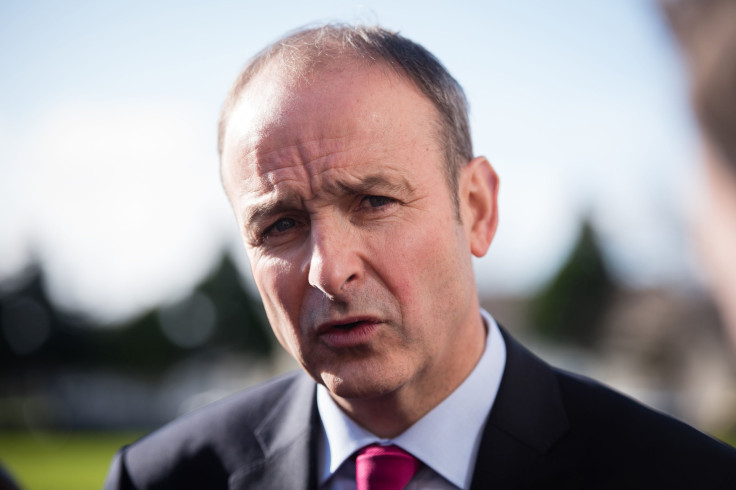Ireland Elections 2016: Polls Wane For Establishment Parties As Voters Turn To Anti-Austerity Candidates

On paper, the Irish government, led by the Fine Gael political party, is a European success story. In 2013, only three years removed from accepting 85 billion euros ($93.8 billion) in bailout cash from European lenders following a continent-wide recession, Ireland paid back its debts, becoming the continent's first nation to do so. Rapid growth followed, along with socially progressive reforms such as marriage equality spearheaded by the party. And yet, many people from Dublin to the rural counties tell a different story of life under Fine Gael and are pushing to oust it from power in Friday's general elections.
“I walk through Dublin city every day, and I see record numbers of homeless every day,” said Glenn Fitzpatrick, a communications student and left-wing activist who was born and raised in the Irish capital. Fitzpatrick, 25, spoke of the need to drastically improve the lives of the middle and working classes, saying that the anti-establishment thrust in Irish politics was coming from a place of dire necessity.
“It’s not because of wanting to be young and radical,” he explained, “It’s because people are poor.”
Economists and political analysts initially projected Fine Gael would breeze back into power in elections Friday. But hundreds of thousands of Irish citizens said they hadn't felt the economic recovery and still struggled to find jobs and pay taxes, causing them to turn increasingly to anti-austerity parties that promise broad-reaching policy changes, such as the reversal of an unpopular water charge and other tax reforms, restoration of social welfare programs and job creation. An unprecedented turnout for far-left fringe and independent parties would represent a challenge to power, as Irish citizens demand an alternative to ruling elites and highlight the difference between headline growth and their lived experience.
Support for Fine Gael was at 30 percent Tuesday, while rival party Fianna Fáil rose to 20 percent and backing for far-left challenger Sinn Fein dipped slightly to 15 percent, according to a poll conducted by Paddy Power Feb. 18-21 and published in the Irish Independent. Fine Gael and Fianna Fáil are widely considered the ruling centrist parties, with the latter leaning more to the right, and they have gone back and forth in governments in the nearly 100 years since the Irish Civil War, in which they fought on opposite sides.
“It’s surprising most observers, and the government itself, which was planning on capitalizing on good economic results,” said Charles Lichfield, an analyst specializing in Western Europe for the political risk consultancy Eurasia group. “There has been real recovery,” he said, adding, “and that’s what’s surprising everyone.”

At first glance, the Irish political story seems similar to electoral dramas that unfolded in Spain, Greece and Portugal following a continent-wide recession in 2008. Ireland was one of many countries struck with high unemployment, towering deficits and slow growth. Like Spain, Portugal and Greece, Ireland accepted billions of euros in a cash bailout from European lenders in exchange for unpopular austerity measures such as budget cuts, social welfare reductions and higher taxes.
After years of austerity, the parties that had spearheaded those unpopular economic reforms in countries across Europe were increasingly ousted by left-wing mavericks who gave voice to people who said the recovery had left them behind. Greece’s Syriza party, with its slogan roughly translated as “We open a way to hope,” symbolized this wave of European movements that argued life under austerity had become impossible and government needed a political rebirth.
But unlike Greece — which remained deeply indebted at the time of its elections – Ireland has not only completed its recovery program but is thriving, by many indicators. It had 7 percent growth in the first nine months of 2015, the highest in the European Union, and unemployment has continued to steadily drop.
Those numbers have not greatly affected many aspects of daily life, according to some indicators, such as people's ability to find homes or jobs. Homelessness has soared in the years following the recession, and in January more Dublin families became homeless than any month on record, the Irish Times reported. While overall unemployment in Ireland fell to 8.8 percent in January, its lowest rate since 2008, youth unemployment still hovers close to 20 percent. Lingering austerity measures, such as an incredibly unpopular water tax, have also turned the public against the government.

Supporters of Fine Gael and certain economists have argued that a five-year term is not enough time to see the fruits of the government’s policies and that bringing in a strong anti-austerity presence in government would threaten national stability.
“The progress Ireland has made over the past five years would be completely thrown away,” said Dale McDermott, 22, a management consultant who was the former president of Young Fine Gael, the party’s youth organizing group. “People are demoralized, but at the same time we have to be realistic with what we can do,” McDermott said.
Some of the problems Fine Gael has reckoned with in its five years were legacies of former Fianna Fáil policies as well as the fallout of a recession. Fine Gael took power in 2011, after the former government had already accepted a bailout in 2010 from the so-called troika of European lenders — the European Commission, the European Central Bank and the International Monetary Fund. Fine Gael had promised to renegotiate certain terms of the bailout but was eventually put in the position of enforcing its terms and serving as the face of many unpopular tax hikes and budget cuts.
“The electorate does punish governments that implemented a troika program, even if it went well,” explained Alessio Terzi, a macroeconomist at Brussels-based think tank Bruegel.

In place of either ruling party, citizens have turned increasingly to smaller parties, most notably the left-wing anti-austerity party Sinn Fein. Led by Gerry Adams, Sinn Fein has long been a driving political force in Northern Ireland while maintaining only a handful of seats in the parliament of the Republic of Ireland, known as the Dáil Éireann. The party is outspokenly pro-nationalist and in favor of uniting the six counties of the north that are part of the United Kingdom with the rest of the isle.
Citizens in Ireland have long seen Sinn Fein as the political wing of the Provisional Irish Republican Army, a predominantly Catholic paramilitary group that engaged in a decades-long civil conflict in Northern Ireland in the late 20th century. Sinn Fein counts former IRA members among its top leaders, and though Adams has never admitted to being in the IRA, many people suspect him of having been one of its top commanders.
In the nearly eight years since the 2008 recession, however, Sinn Fein has rather successfully remade itself into a prominent anti-austerity party, campaigning for classically left reforms, such as an abolition of the water tax, job creation and higher pensions.

Given that not one of these parties is projected to hold anything close to a clear majority, polls predict a hung vote and ensuing uncertainty as Fine Gael looks to find a new coalition partner. Each citizen's vote would be a highly personal one, according to several Irish academics, who said the final choice would come down to “Whom do you trust?”
"Trust in politics is an important factor,” said Eoin O’Malley, a political scientist specializing in Irish electoral politics at Dublin City University, adding, “There is a sense of distrust in mainstream politics.”
The degree to which each individual has experienced the hardship of the recession and its aftermath will also be a driving force, according to Neil Jarman, an anthropologist studying Irish civil society and political violence at Queen's University in Belfast.
The election will be decided, according to Jarman, by “whether people feel enough progress has been made on building the economy back up again, or whether they still feel the resentment.”
© Copyright IBTimes 2024. All rights reserved.





















